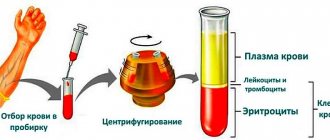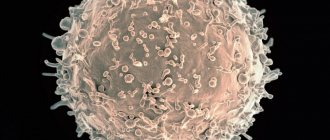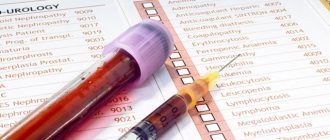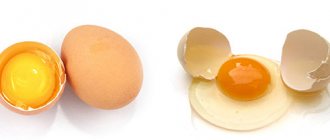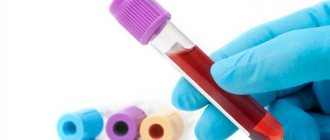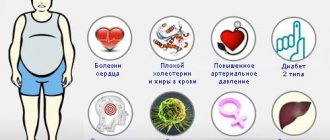General blood test - where do they come from?
From a finger or from a vein. Previously, the practice of collecting capillary blood (that is, from a finger) was widespread. Today, this technique is being replaced by assessment of the composition of the venous fluid. In large laboratories, only the second method is used. And there is an explanation for this.
It is difficult to assess the real picture from a drop of the main physiological fluid. It is simply not enough to assess, for example, hemoglobin. Therefore, if you want to get an accurate result rather than an approximate one, go to a laboratory where the blood is taken from a vein.
pixabay.com/
How is blood taken and is preparation needed for the procedure?
Donating blood is a simple and virtually painless procedure that even infants can easily tolerate. Biological material for general examination is taken mainly from a finger, but to check against an extended list of parameters and in some other cases, doctors prescribe venous puncture.
To prevent infection and take clean material, the nurse wipes the pad of one of the fingers of the left hand with a swab soaked in alcohol. Immediately after this, a tiny incision about 3 mm deep is made with a special instrument, a scarifier. The blood protruding from the incision is collected with a collection pipette and poured into a tall tube. A small portion of the liquid is smeared onto a glass slide.
If a doctor prescribes a venous puncture, a rubber tourniquet is placed on the patient's forearm to slow down the blood flow below the dressing. Then the puncture site on the inner surface of the elbow is disinfected with alcohol, after which a hollow needle is inserted into the vein. Through it, blood from the vessel fills a special test tube, and a small amount of biomaterial is applied to a glass slide.
No special preparations are required for the procedure. The only thing doctors can ask is not to have breakfast before collecting biomaterial, since eating food can distort the results obtained.
In some cases, the analysis has to be done several times over a set time period, including to track the effectiveness of the prescribed treatment. To obtain the most accurate data for comparison, repeat blood donation is carried out approximately in the same period of time as the first time.
General blood test - what is included
The analysis can be brief and detailed. The first evaluates three criteria.
Hemoglobin. A pigment responsible for transporting oxygen to organs and tissues. Decreased levels can be observed with anemia, bleeding, kidney damage, and oncology. Elevated levels indicate thickening of the blood, disturbances in the functioning of the heart, and dehydration of the body.
Leukocytes. These are white cells, a change in the number of which indicates an infectious or inflammatory process. There are five types of leukocytes working in our body, and all of them protect the body from negative external factors and aggressions. Thus, lymphocytes “jump” during inflammation, eosinophils during an allergic reaction, monocytes during autoimmune diseases and tumors. Based on the “leukocyte formula” picture, a doctor can diagnose a whole range of diseases.
ESR. Erythrocyte sedimentation rate indicator. If it is high, it means that there is inflammation or infection in the body. In women, ESR increases on the eve of critical days, in the first trimester of pregnancy. A low level indicates a previous illness.
Merely assessing these factors is enough to diagnose inflammation, the presence of infection and the tendency to clots.
pixabay.com/
Technique for collecting capillary blood from a finger
- Soak a cotton ball (gauze) in an antiseptic.
- With one hand, take the 4th finger of the patient's free hand, massage it lightly, pinching the upper phalanx of the finger with the index and thumb.
- With the other hand, treat the inner surface of the upper phalanx of the patient’s finger with an antiseptic with a cotton ball (gauze) soaked in an antiseptic. Dry the surface of the finger with a dry sterile cloth (cotton ball).
- Place the used napkin (ball) in the consumables tray.
- After the skin has dried, take a scarifier and puncture the skin with a quick movement.
- Place the used scarifier in a puncture-resistant waste container.
- Wipe off the first drops of blood with a dry sterile cloth (cotton ball). Place the used napkin (ball) in the consumables tray.
- By gravity or using a capillary, collect the required amount of blood. The volume of blood drawn must correspond to the mark on the tube.
- Press a napkin (cotton ball) with an antiseptic solution to the puncture site. Ask the patient to hold a napkin (cotton ball) at the puncture site for 2-3 minutes.
- Invert the tube into a vertical position to transfer blood from the capillary to the tube.
- Turn the cap off the tube, remove it, and place it in a puncture-proof container along with the built-in capillary without disassembling it.
- Remove the cap from the base of the test tube, tightly close the test tube or close the test tube with a cap until it clicks (depending on the modification of the test tube).
- Mix the sample thoroughly by inverting the test tube.
What does a complete blood count show?
The detailed analysis considers:
- level of erythrocytes - red blood cells;
- color index (MCHC) - a sign of saturation with hemoglobin and red blood cells;
- reticulocytes - germ cells of red blood cells;
- platelets - cells responsible for the ability of blood to clot;
- thrombocrit - the ratio of total blood volume to the number of platelets;
- Plasma cells are agents of the immune system that produce antibodies.
The disease is indicated by strong deviations in indicators. For example, an increase in red blood cell levels may indicate heart or lung disease. A change in color indicator is a sign of anemia and vitamin deficiency. The reticulocyte count may change in anemia, tumor metastasis, and autoimmune diseases.
An increase in platelet levels is possible after surgery, with intense physical activity, and tumors. A decrease indicates anemia, an autoimmune process, and inflammation.
Preparing for a thyroid-stimulating hormone (TSH) test
TSH levels are the most sensitive test for assessing thyroid function. However, it remains the most frequently deviating from the reference interval among all hormonal studies. To obtain reliable results, in addition to the general rules for preparing for laboratory tests, it is important to follow the rules below:
- The TSH level changes significantly during the day: its highest concentration is determined in the morning, and its minimum in the evening. You should donate blood at the same time, especially in case of repeated tests, since the time of blood donation plays an important role in the interpretation of the TSH level.
- In the case of thyroid hormone replacement therapy, it is necessary to take the drug after drawing blood for testing. Taking thyroxine and iodine the day before the test does not affect the TSH concentration. It is advisable to carry out repeated studies of TSH levels in order to monitor therapy no earlier than 6 weeks after changing the dose or type of drug.
- It must be remembered that the TSH result may be distorted by the effects of medications taken or the products of their metabolism. Before donating blood for analysis, you should consult your doctor about the possibility of limiting the intake of medications during the period of preparation for the study. It is recommended that you stop taking medications, including dietary supplements, before the study. If it is impossible to stop taking medications, you should provide the name of the drug and the time of its last use when donating blood.
- The thyroid gland is associated with the work of many organ systems, disorders in which can affect the secretion of the hormone: acute and chronic stress, acute infectious diseases, disorders of lipid and vitamin metabolism, leading to excess cholesterol, homocysteine, as well as disturbances in sleep patterns and wakefulness at night, which disrupt the normal rhythm of TSH secretion. The influence of these conditions must be taken into account when interpreting the results if it is not possible to postpone the study to a later date.
- Different research methods may be used in different laboratories, therefore, in order to correctly evaluate the research results, it is necessary to conduct research in the same laboratory and on the same analytical system.
How to read results
In commercial laboratories, the result is given on a form where standards are indicated along with the indicators. This is convenient for perception, since shifts in one direction or another are immediately visible. Moreover, the standards are indicated separately for men, women and children. And this is important to consider, especially in childhood.
pixabay.com/
As you grow older, the composition of your blood changes. And the standards that are relevant for a month-old baby are no longer suitable for a one-year-old baby. Therefore, age limits have been introduced for children:
- up to a year;
- from one to six years;
- from seven to 12 years;
- from 13 to 15 years.
And only then the indicators approach those of adults, for men and women. But even the deciphered results do not use such a clear gradation. Therefore, only a doctor should read the analysis and interpret it. After all, when studying on your own, there is a high risk of making a mistake and diagnosing diseases that you or your child do not have.
In addition, a general analysis is a primary diagnosis. And it is usually not enough to make a diagnosis. Your doctor may order other types of tests. And based on the data obtained, establish the cause of the disease and recommend treatment. So studying the “blood picture” by the patient is, as a rule, pointless. These numbers on paper only have meaning in context. And only a doctor can examine it.
Rules for collecting capillary blood
Tool
The finger is pierced with a disposable sterile scarifier - this eliminates the risk of infection. The size of the needle or blade is selected individually, depending on the age and physical (physiological) characteristics of the patient. Modern automatic scarifiers reduce both pain and anxiety for the patient.
| Acti-lance automatic lancets | Scarifiers are designed specifically to prevent severe trauma to the phalanges of the fingers of patients. Uniform needle pressure reduces pain to a minimum. |
| Prolance automatic lancets | Scarifiers with a double spring mechanism provide high puncture speed and eliminate needle vibration. 6 different color-coded sizes allow you to choose the lancet for your desired blood flow. |
| Impromini tubes with plastic cap without capillary | Hermetically screwed plastic cap. They have a protrusion tray for easy blood collection. The design of the lid reduces the aerosol effect. |
| Impromini tubes with plastic cap and capillary | The built-in capillary allows you to quickly and accurately draw blood into the tube. Hermetically screw cap. The second hinged lid ensures the safety of the sample during transportation after removing the capillary. |
Choosing a blood collection site
Choose a non-cooled, non-cyanotic, non-edematous finger. The puncture is best done at the tip of the fourth finger of the left hand (for right-handed people). Fingers II and III can be pierced. If the patient’s hands are cold, then before performing the puncture they need to be wrapped in a fairly hot towel for 10-15 minutes. To increase blood flow, gently massage the finger from base to tip. Using a swab moistened with alcohol, carefully treat the tip of the finger and allow the surface to dry.
In newborns and children under 1 year old, capillary blood is collected from the heel. The method of taking blood from the heel is in many ways similar to the method of taking blood from the finger. A deep heel injection is performed at the distal edge of the heel bone, after preheating the foot in warm water
The procedure for taking capillary blood from a finger
- Prepare the necessary equipment on the manipulation table.
- Identify the patient, introduce yourself, announce the progress and purpose of the procedure. Make sure that the patient has informed consent for the upcoming procedure. If this is not the case, check with your doctor for further steps.
- Label the tubes, indicating the patient’s name and department (in order to eliminate errors in identifying the biomaterial sample).
- Treat hands hygienically and dry.
- Treat your hands with antiseptic. Do not dry, wait until the antiseptic has completely dried
- Wear non-sterile gloves
References
- Nazarenko G.I., Kishkun A.A. Clinical assessment of laboratory research results // M.: Medicine - 2006. - 544 p.
- Tatkov O.V., Stupin F.P. General blood test. Information collection // M.: Publishing solutions. - 2016. - 72 p.
- Fauci, Braunwald, Kasper, Hauser, Longo, Jameson, Loscalzo Harrison's principles of internal medicine, 17th edition, 2009
- Mosby's Diagnostic and Laboratory Test Reference 14th Edition, 3251 Riverport Lane
- St. Louis, Missouri 63043: Elsevier Publishing Hall 2019
Interpretation and normal values of the main blood test parameters
| How is it designated? | What does it mean | Norm for women | Norm for men |
| R.B.C. | Red blood cells | 3,5-4,5 | 4,0-5,5 |
| WBC | Leukocytes | 4-9 | |
| PLT | Platelets | 180-320 | |
| HGB | Hemoglobin | 120-140 | 130-170 |
| MCV | Average erythrocyte volume | 82-98 | 81-95 |
| MCH | Average HGB level in erythrocyte | 26-32 | |
| MCHC | Average concentration of red blood cells in HGB (%) | 31-38 | |
| HCT | Hematocrit (in%) | 35-44 | 40-50 |
| RET | Reticulocytes (%) | 0,2-1 | |
| ESR | ESR (mm/h) | 2-15 | 1-10 |
| CPU | Color | 0,85-1,05 | |
Taking blood from children from 1 day to 12 months
- Try to schedule blood sampling for infants during the break between feedings, closer to the second feeding.
- 30 minutes before the procedure, the child should drink 50 ml of the liquid that you usually give him.
- When taking blood, the child’s hands must be warm. If you come from outside or the room is not so warm, the child’s hands need to be warmed. This is a mandatory and very important condition, because the amount of blood that will be received by the health worker depends on its fulfillment.
- Immediately before blood is drawn, the child should be positioned so that he is as comfortable as possible. A couple of minutes should pass before the nurse begins drawing blood. This time will be enough for the baby to calm down and get used to the environment a little.

